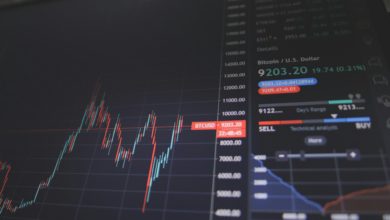U.S. Consumer Confidence Shows First Positive Shift in 2025 as Economic Concerns Ease

U.S. consumer confidence showed its first signs of improvement so far in 2025, signaling that Americans have begun to feel more positive surrounding the country’s economic trajectory. The latest data from the University of Michigan survey showed that sentiment increased for the first time since December 2024. The index rose to 60.5 in June, up from 52.2 in May and surpassing economists’ expectations of 53.6. This shift follows one of the lowest readings in recent history and reflects a growing sense of optimism as consumers adjust to ongoing economic changes.
Factors Behind the Increase in Consumer Sentiment
A key factor behind the rise in consumer confidence is the easing of concerns surrounding U.S. trade policies, particularly President Trump’s tariffs. After a period of heightened volatility caused by the aggressive tariff increases earlier this year, the administration has dialed back some of its more confrontational measures. The effective U.S. tariff rate, which peaked at around 27% in April, has since dropped to about 14%, according to JPMorgan estimates. This reduction in trade tensions has allowed consumers to regain some of their economic optimism, helping to offset the initial shock from rising tariffs.
The survey also showed a notable dip in inflation expectations. One-year inflation expectations, which reached a four-decade high of 6.6% in May, fell to 5.1% in June. Long-term inflation expectations also decreased, signaling that consumers are becoming less concerned about runaway inflation. This shift suggests that, while inflation remains a concern, the worst fears surrounding price increases may be subsiding, contributing to improved consumer sentiment.
Continued Caution Despite Improvement
Despite the positive uptick in consumer confidence, many Americans are remaining cautious. Joanne Hsu, director of the Survey of Consumers, noted that while the improvement is encouraging, consumers continue to feel guarded about the overall trajectory of the economy. Key areas such as business conditions, personal finances, and labor markets all remain below the levels seen in December 2024. Additionally, while optimism has increased, many consumers are still hesitant about making significant purchases or investing in major assets due to lingering economic uncertainties.
Broader Economic Context and Implications for the Market
The improvement in consumer confidence comes on the heels of another positive report from The Conference Board, which showed an increase in consumer sentiment in May. The Conference Board’s Consumer Confidence Index surged to 98, up from 85.7 in April, indicating that Americans are becoming more optimistic about the economy in the short term. The expectations index also saw a dramatic jump, reaching 72.8 in May, marking its largest month-over-month increase since 2009. This suggests that consumer optimism is on the rise, providing a boost to investor sentiment.
The impact of these shifts is not limited to sentiment alone. Goldman Sachs’ chief U.S. equity strategist, David Kostin, highlighted that softer economic data, such as consumer surveys, often leads hard economic data, like inflation and employment readings, by several months. According to Kostin’s analysis, when soft data improves, it tends to drive the S&P 500 higher, even if hard economic data lags behind. This pattern suggests that the recent rise in consumer confidence could support continued gains in equity markets, even as other indicators remain mixed.
Looking Ahead
While the shift in consumer confidence is a positive sign for the economy, the broader outlook is unclear. The easing in tariff-related anxiety has provided some relief, but trade tensions, inflation, and global economic conditions continue to present risks. The market will be closely watching for any signs of sustained improvements in consumer sentiment, as these trends often precede stronger economic performance.
In the coming months, analysts will focus on whether the momentum in consumer confidence can be maintained or if it begins to plateau. The Federal Reserve’s decisions on interest rates and inflation, as well as any further shifts in trade policy, will be key factors influencing both consumer behavior and broader market performance. If the recovery in consumer sentiment proves durable, it could provide a significant boost to the economy and equity markets, even in the face of slower hard data. For now, consumers seem cautiously optimistic, and their sentiment may continue to play a pivotal role in shaping the economic outlook.




